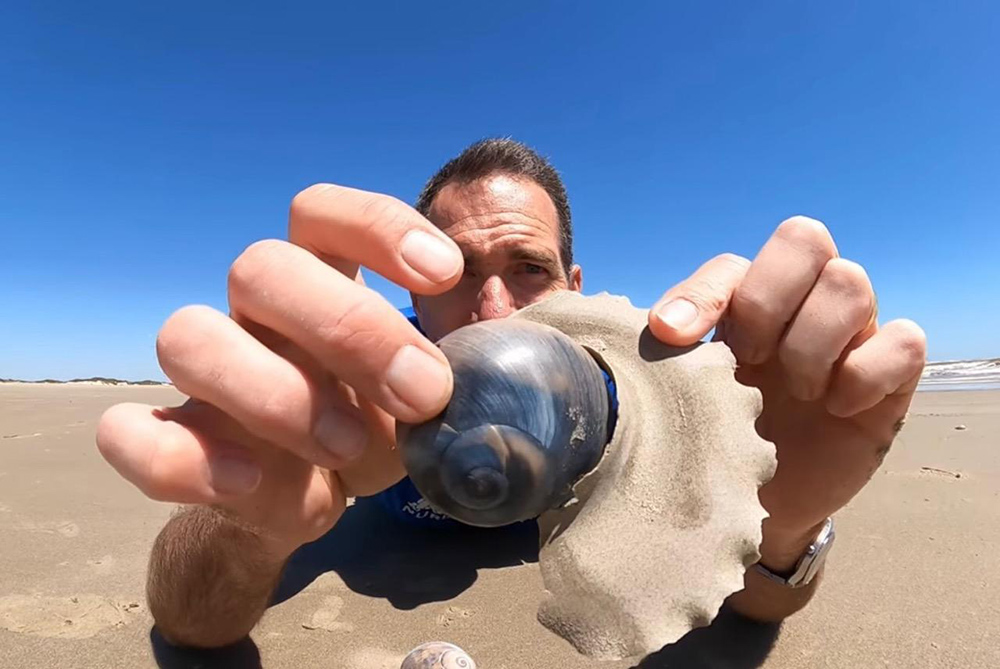By James FitzPatrick
Contributing Writer
This piece of beach-side “plastic” is very much alive.
Beachcombing is always an adventure. Every time you walk on the strand is an opportunity for discovery. Keep your eyes peeled, and you will always find something you haven’t seen before.
There are also the tried and true, including the knobbed whelk, New Jersey’s official state shell; the surf clam shell, ideal for tossing, decoration, and, when the creature is still attached, bait; and the mussel and crab shells, which always bring to mind a delicious Jersey Fresh seafood meal.
Sometimes though, you pick up something that’s not as ho-hum, like the pointy black shark egg pods that look like something straight out of “Batman” or the razor shells that always feel special when found intact.
During recent beach days, some folks have been coming across mysterious half-circles. The puzzle cried out for some research. After some sifting and googling, we found the answer.
They are called sand collars.

So named because of their similarity in shape to old-fashioned, removable shirt collars, sand collars are created when snails lay their eggs.
What may appear to be a broken piece of plastic is actually an egg casing created by the familiar moon snail, also known as the shark’s eye. The casing is formed to hold thousands of eggs and is a combination of mucus, sand and eggs. If you hold the snail shell in the sand collar, you can see how well they fit together.
The sand collar does not last. Eventually, it will crumble and disappear into the sand and surf.
Another piece of the snail puzzle that people often find in the sand is an almost clear, yellowish plastic-like substance called the operculum, which covers and protects the snail when it is inside the shell.
These creatures are not unique to New Jersey; they have a global presence.
“Although the collar feels hard, plasticky and appears dead, each collar can contain thousands of living eggs,” according to wildsingapore.com. “When the eggs hatch, the collar disintegrates. Thus, an intact collar has living snails in it. Please don’t damage the sand collars.”
Learn more from a YouTube video posted by Jace Tunnell of the University of Texas Marine Science Institute:https://youtu.be/6BupVesjp3I. Also see this online article: http://www.wildsingapore.com/wildfacts/mollusca/gastropoda/naticidae/sandcollar.htm.
Copy editor and Contributing Writer James FitzPatrick has been a community journalist in Atlantic and Cape May counties for more than 30 years, including 20 years as editor of The Current Newspapers. He lives in Hammonton.






